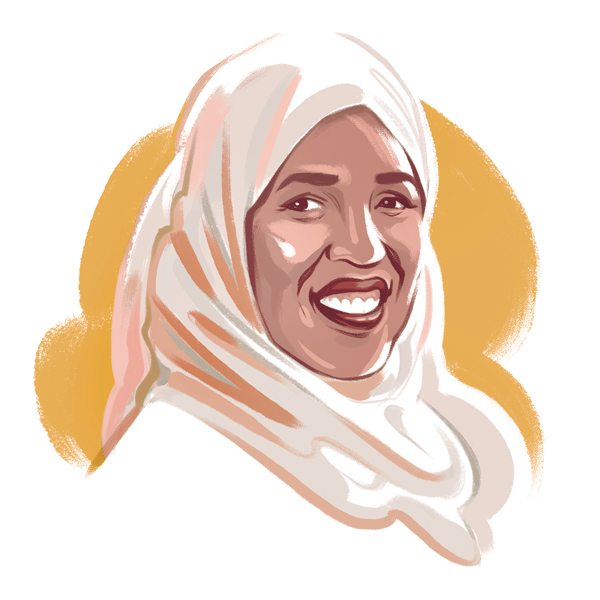
(Rachel Idzerda)
There are many dark, difficult moments in Fartumo Kusow’s debut English-language novel, Tale of a Boon’s Wife, set in the years before and after the fall of the Somali government in 1991. The ability to create powerful characters from war-torn countries that come to life for readers in North America is no small feat for a Somali-born journalist who only learned English after moving to Canada in 1991.
Kusow uses Somalia’s political structure as a vehicle to examine “otherness” – which, in the context of the novel, refers to the divisive system that shapes Somalia’s history, society, and politics through clans that control districts and businesses and are the arbiters of most aspects of Somali life. “I wasn’t necessarily writing for a Somali reader,” Kusow says. “I was using Somalia’s structure before and during the war as an example of what could happen when you have a system that “others” people … and then added the tragedy of war or natural disaster to that.”
Idil, the protagonist of Tale of a Boon’s Wife, is a feisty teenage girl who adores her military father – before she witnesses his unashamed infidelity and iron-fist rule over crop farmers near her village. Idil makes the mistake of falling in love with her classmate Sidow, a young man from the lower-class tribal clan known as “Boons.” Idil, a member of the upper-class “Bliss” clan, is socially forbidden to engage with Boons, who are historically believed to be physically ugly and to possess small brains – the “first cousins of African apes,” as Idil’s mother describes them.
Like Idil, Kusow grew up among warring tribal clans in Somalia, on a farm in the village of Baidoa, more than 200 kilometres south of Mogadishu. The government-imposed change in agricultural regulations she describes in the novel – where Sidow’s family crops are essentially stolen by the government led by military chiefs, Idil’s father among them – rings particularly close to her heart. “I remember my father saying he had to sell the crops for 50 cents less than it had cost him to grow,” she says. “So some farmers thought instead of losing money on it, they would leave parts of the field; they would grow less. But then the whispers were that any farmers who did so would be punished, and that they were going to arrest the boys in the family. That’s the way to really hurt a family.”
Soon after, her father arranged for her brothers to immigrate to Canada. Kusow followed in 1991, along with thousands of other Somali refugee claimants, following droughts and famine in the 1980s. Due to visa complications, however, Kusow had to leave behind her two children, then just three and five, with her mother. Eight months later, in the midst of civil war, her mother and children made the treacherous nine-day bus journey from Somalia to Ethiopia. During that time, Kusow heard dozens of stories from loved ones back home – stories not unlike the grisly accounts she narrates in her book. Some of them are haunting: the teenage girl who is raped by soldiers in front of their parents before being shot dead; the grieving, blood-soaked mother who wouldn’t let go of her infant baby even after he is hit by shrapnel from a gun battle raging over the bus she sits on while fleeing the country. “I don’t know how I got through it,” Kusow says.
Kusow, who now works as a high school English teacher in Windsor, Ontario, acknowledges her book was difficult to write at times. “It was just heavy, and when I read it aloud for my writing group, I felt really burdened by it. At some point, I didn’t feel like I was writing it, but that the characters were writing themselves.” It took her four years to complete Tale of a Boon’s Wife, often writing late into the night after a day’s work and her five children had gone to bed. Kusow’s children are now grown, and read her book with fascination. “My daughter said it was a learning experience for her,” she says with a smile. “I hope what any reader would take away from this is that it is a human story. “And to start asking the question, What part do we play in ‘othering’ people without getting to know them?”
 Contact us via email
Contact us via email

